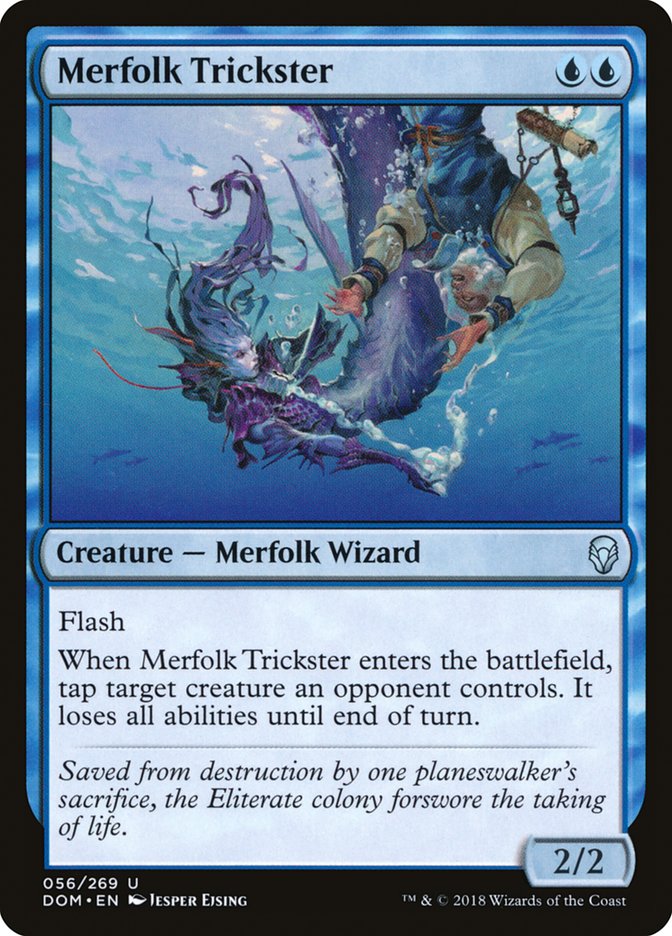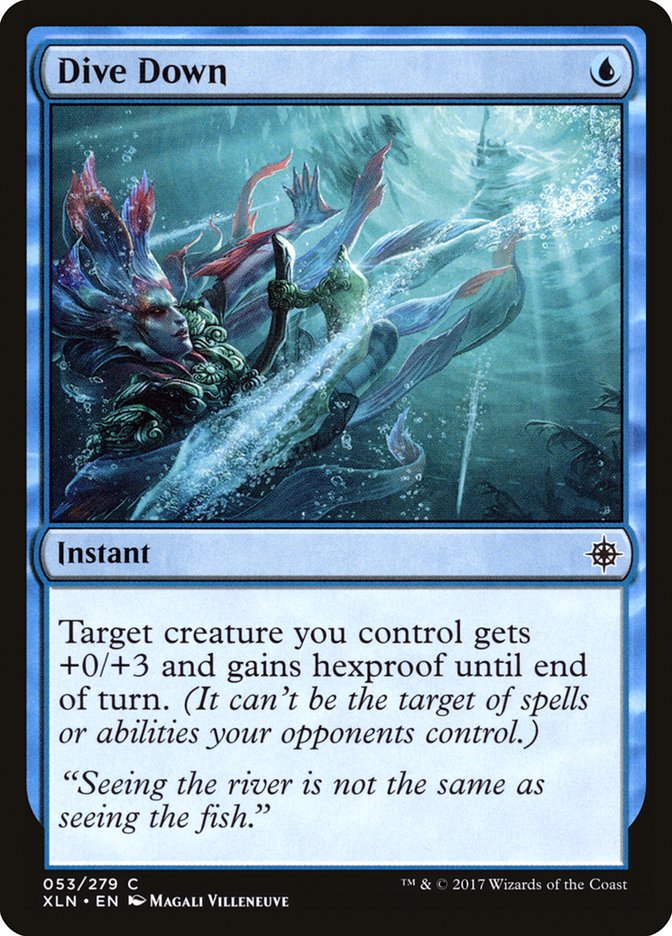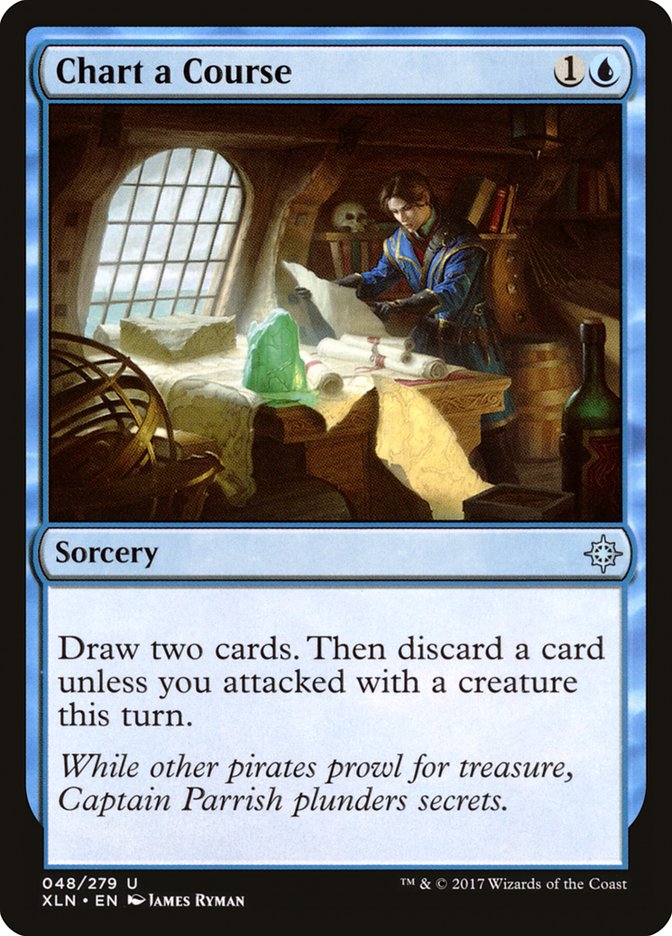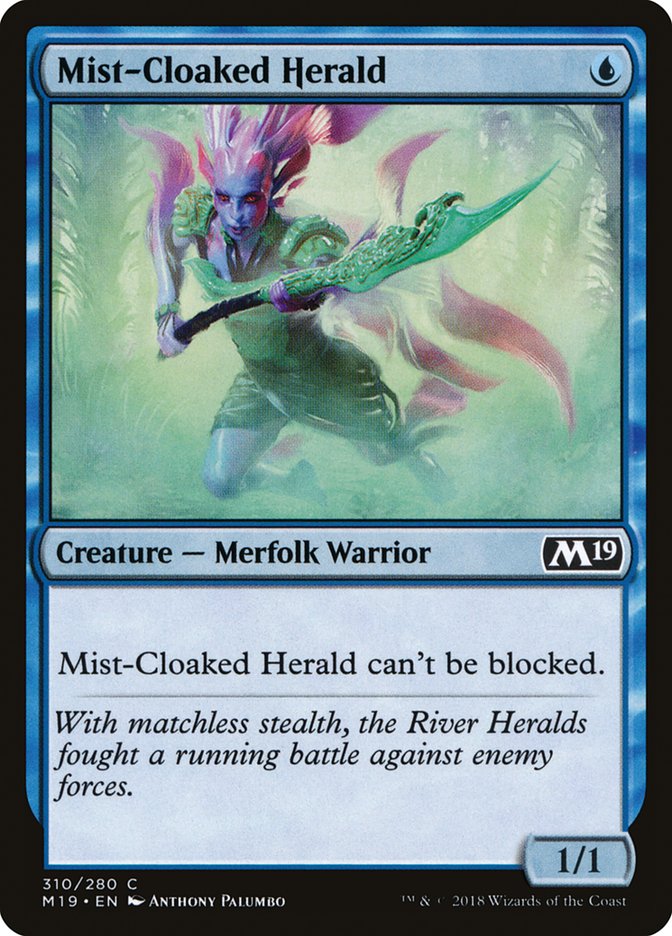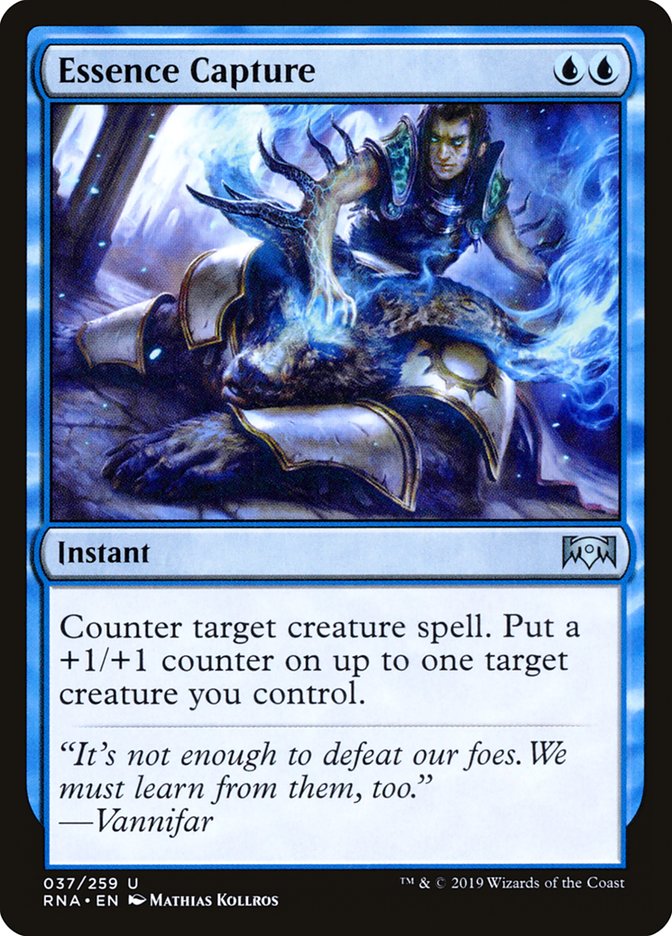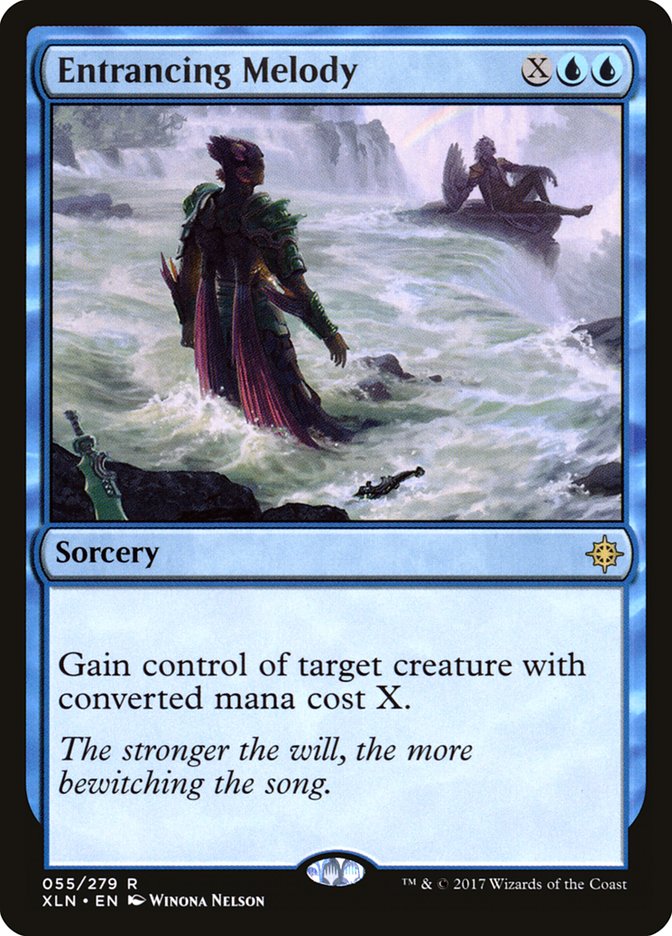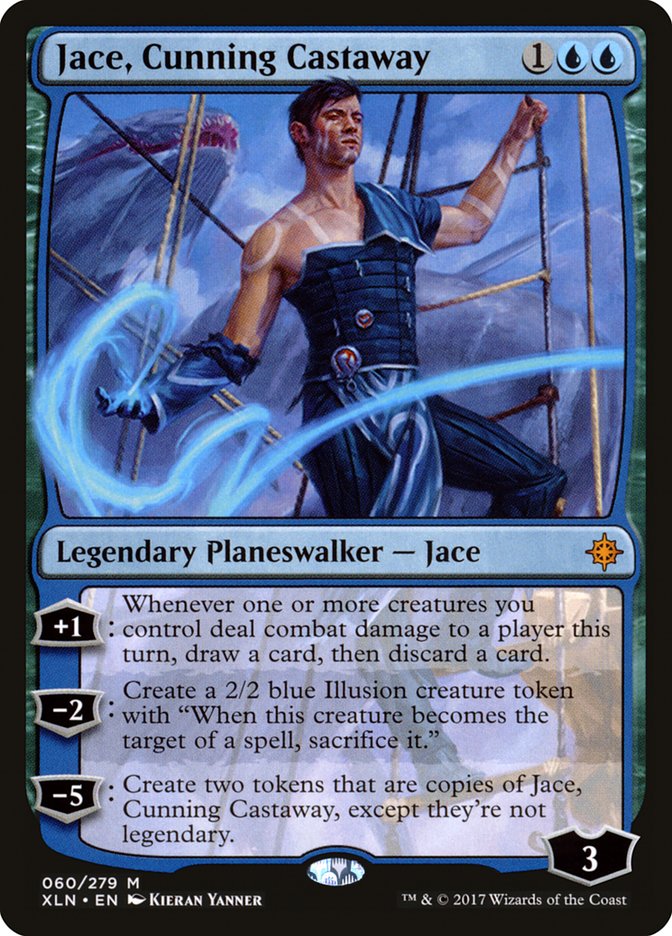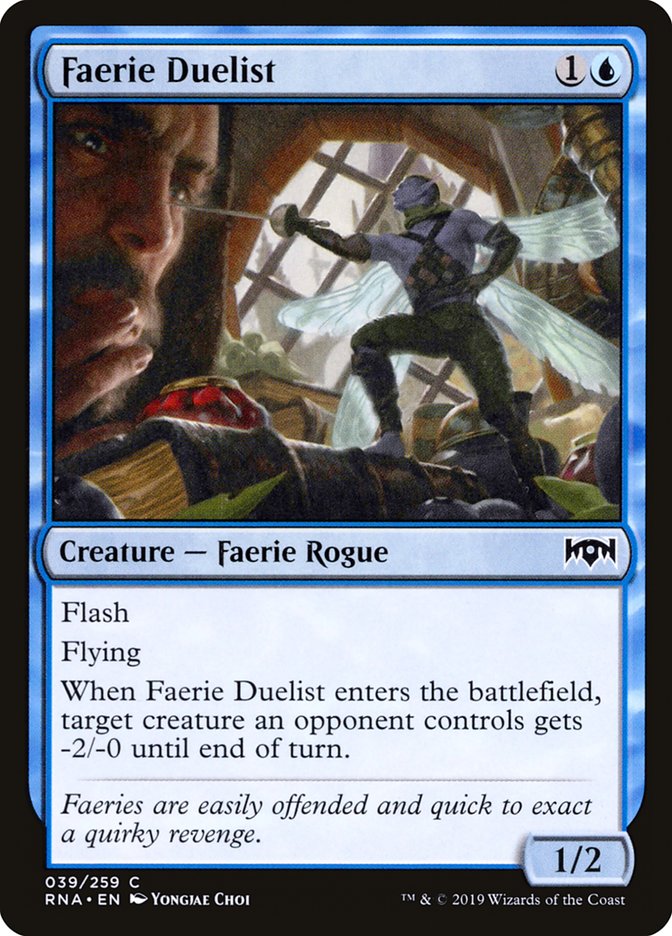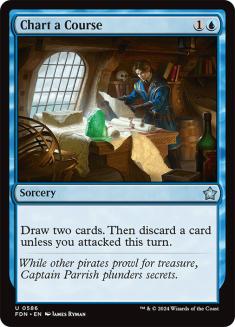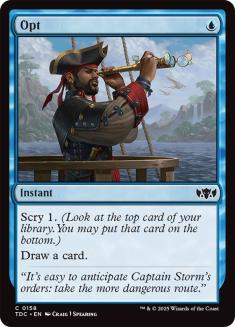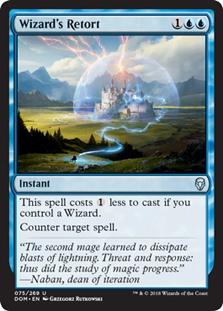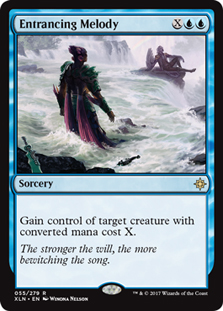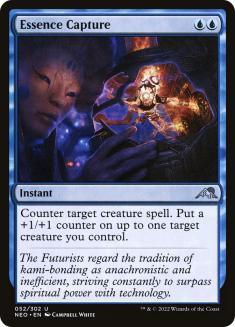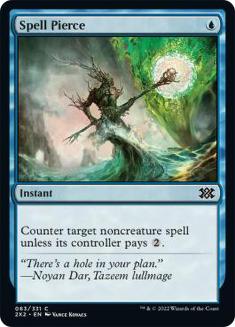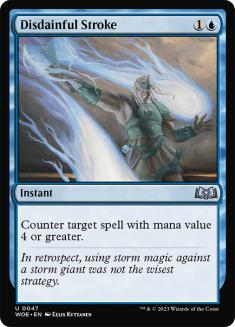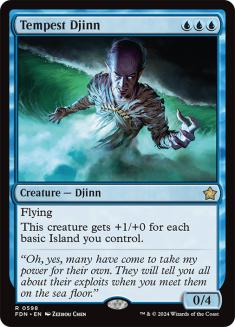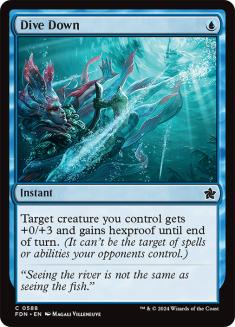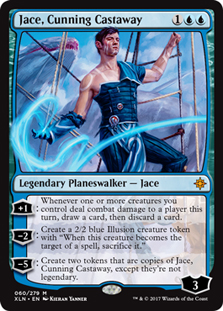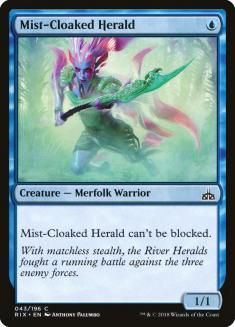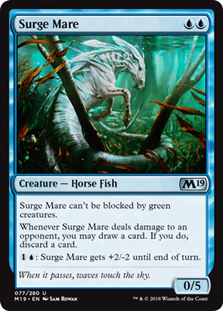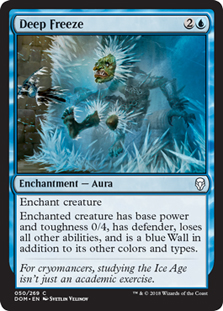A few years ago, only a handful of months into learning to play Magic, my best friend at the time lent me an Izzet Delver deck for my first ever Tuesday Night Modern event at the local game store that I would later go on to run tournaments at. The memory that sticks out most to me about that evening was losing to a Wurmcoil Engine that a Temur Scapeshift deck had sideboarded in against me and expressing frustration that Lightning Bolt hardly interacted with such a bulky creature and that Vapor Snag couldn’t deal with that card for good. Why not play a card like Path to Exile instead? Why not play unconditional removal instead and just answer all of your opponent’s threats permanently?
Suffice it to say, it has been a long road for me getting to the point of winning Mythic Championship Cleveland with a tempo deck. Looking back on that story almost feels surreal, considering now I love tempo strategies so much that I would have struggled to not register Mono-Blue Aggro, even if I didn’t consider it likely the best deck in Ravnica Allegiance Standard. I’m just madly in love with the efficiency and tricky nature of cards like Merfolk Trickster, Dive Down, and Spell Pierce – both how much play they afford you and how much opportunity they give an opponent to mess up.
I treated my RPTQ two weekends before the Mythic Championship as a trial run for playing the deck in paper. I needed to see if it was as good against people sitting across the table from me as it had been when I was playing it online and also see if I was capable enough of concealing information whilst playing the deck so as not to give up percentage points against perceptive players in real life. This need to conceal information of what I have access to more than I’d typically have to showed up on the MC coverage in the form of a couple of habits. One is leaving my hand face down on the table whenever I do not have priority; the other what has become affectionately known from fans who watched coverage as my ‘death stare.’
When the only games I lost all day long at the RPTQ were in the two mirror matches I played, and when I very easily qualified for Mythic Championship London (which you could say is a bit of a wasted qualification in retrospect), I knew there was nothing else I could realistically take to the Mythic Championship. I thought the deck was excellent, I was winning with it, and most importantly I deeply enjoyed playing it. All my nervousness about playing the deck in paper dissipated, and rather than spending a week and a half finding an archetype to play, I instead got a week and a half to master and fine-tune an archetype instead, arriving at this list:
To quickly run through some conclusions I came to on various card choices:
Chart a Course is honestly quite bad. It’s almost impossible to cast it Turn 2 when you’re on the draw, as then you give your opponent an opportunity to resolve scary three-drops. This means that often Chart a Course is relegated to being a Turn 4 or Turn 5 play, losing you access to the hitting-land-drops upside of Divination effects. I settled on still playing a single copy because you can only have so much conditional interaction in your maindeck and Chart a Course helps dig you towards the correct interaction for the matchup you’re playing, but I cheerfully sideboard out the card a lot.
The moment you cut down on Chart a Course so much, you’re deciding to skew slightly less aggressive and slightly more aggro-control. In turn, this makes Mist-Cloaked Herald less appealing, since you need fewer one-drops for the sake of enabling raid on your Chart a Courses. I still play a single copy to help give that little extra boost to the chance of getting a Curious Obsession nut-draw and to allow me a bit more counterplay to Kraul Harpooner, but it’s probably second to Chart a Course as the worst card in the deck.
Maindeck Negate is a nod to the various Nexus of Fate decks. The matchups are already pretty good, but I was getting frustrated about randomly losing Game 1s due to only drawing a single Wizard’s Retort and desperately wanted at least one more hard counterspell in the maindeck to help prevent this.
Essence Capture is incredibly powerful, so much so that I jokingly call it Searing Scatter – it’s often straight-up an Essence Scatter that easily deals three or more damage to your opponent. Unfortunately, you can’t play more than a couple of copies in the maindeck since there are a bunch of decks that are creatureless in Game 1, but the third copy in the sideboard has really impressed me and the fact that Reid Duke was capable of sideboarding up to four copies if he wanted to is the most impressive part of his list.
The maindeck Entrancing Melody is a nod to the mirror match and aggressive white strategies. It’s an incredibly powerful and swingy singleton to be able to draw towards in Game 1s. Having the full playset in my 75 was a nod to those matchups again, whilst being an admission that Exclusion Mage is simply not that good – its inefficiency relative to Melody is pretty clear when you consider that for the same cost of bouncing a Pteramander, you could be stealing it instead, never mind how much dramatically worse it is against History of Benalia. Its ineffectiveness meanwhile can be seen in Game 4 of my quarterfinals match, where an Exclusion Mage bounced my Tempest Djinn and I just recast it, leaving my opponent in the exact same bad scenario except they had a…Runeclaw Bear?
When it comes to playing a bullet for the Esper Control matchup, Search for Azcanta dies to Mortify, is slow, and is incredibly mana-intensive. Meanwhile, Jace, Cunning Castaway is very hard to answer if your opponent trims on expensive and clunky Vraska’s Contempts, repeatedly generates threats, and loots towards whatever type of counterspell you need most.
Faerie Duelist is an incredibly awkward card against skilled players because they’re already strongly inclined towards playing around Merfolk Trickster, a not dissimilar effect, whenever reasonable.
I like nineteen lands in my pre-sideboard configuration, but you really want to have that extra land to sideboard in when you’re sideboarding in a bunch of expensive Entrancing Melodies or when you’re playing against decks that run Spell Pierce (or, more broadly, decks that are looking to use access to more mana as a way to leverage their spells through in counter wars).
As for playing the deck, the single biggest piece of advice I can give someone looking to improve with Mono-Blue Aggro is to be more patient – try to build a clear picture of how the game is going to pan out and work towards that.
It’s pretty serendipitous that my final game of the whole tournament was also the game that most puzzled viewers as I just refused to cast Curious Obsession. I knew as early as Turn 2 that my plan was to cast the Obsession on Turn 4, in order that I could always have Essence Capture open for a Thief of Sanity even after fighting to protect the Obession’ed Pteramander with a Dive Down.
There really was no rush to cast my spells right away when waiting on them instead would allow me to follow the deck’s normal plan of trying to use my spells in such a way to both make life as inconvenient for my opponent as possible whilst also ensuring my opponent can’t gain meaningful traction towards winning the game themselves.
Sideboarding
I have so much I want to say about playing this wonderful deck and would love to dive deep into how to play various key matchups with it, especially the mirror, which is fascinating and deeply tense. For now, though, many people have requested a sideboard guide and I’ll gladly oblige.
VS Mono-Blue Aggro
Out:
In:
VS Sultai Midrange
Out:
In:
VS Esper Control
Out:
In:
Many people were shocked to see me sideboard out my Tempest Djinns in my finals match against Yoshihiko Ikawa. Tempest Djinn is in a weird spot in the matchup where it’s actually a perfectly fine, though unexciting, card pre-sideboard. Pre-sideboard you don’t have enough countermagic in your deck to play a true protect-the-queen strategy with one lone creature, which makes just having more hard-hitting threats more relevant, and there’s less of a demand to hold open mana through your opponent’s turn.
This demand to hold open mana up after sideboard is due to the creature package that Esper sideboards in, as a Thief of Sanity or Lyra Dawnbringer resolving will often be game-ending. As a result, it’s extremely hard to resolve a Djinn before you hit your fifth land drop post-sideboard due to a need to hold open Essence Capture. This makes me largely disinterested in the card in this matchup, considering how easily it dies to almost every single removal spell in the opponent’s deck.
There’s a bit of a song and dance over whether your Esper Control opponent will sideboard in creatures and therefore whether you should keep in your Essence Captures. I was thinking about this during my finals match and came to the conclusion that Esper with creatures in their deck is much leaner and more threatening and is likely still the correct way to have the Esper list be post-sideboard, even if they know you’re keeping in creatures.
At the same time, having a few dead Essence Captures in your deck isn’t the end of the world if your Esper opponent doesn’t sideboard in creatures, as their deck will be clunkier as a result, whilst not having Essence Captures in your deck when your Esper opponent does have their creatures in is a disaster. So, somehow, we end up at the conclusion that your Esper opponent should always sideboard in their creatures, even though they know that you’re always sideboarding in your Captures.
VS Mono-Red Aggro/Gruul Aggro
Out:
In:
The single Deep Freeze is a hedge against Rekindling Phoenix. If you actually see that card, you really want the second copy.
VS Azorius Aggro/Mono-White Aggro
Out:
In:
VS Izzet Drakes
Out:
In:
Entrancing Melody is dramatically worse against an Arclight Phoenix variant of this deck like the one that Luis Scott-Vargas Top 8’ed the Mythic Championship with, though realistically you’re never beating an Arclight Phoenix deck like LSV’s regardless of how your sideboard.
VS Nexus of Fate Nonsense
Out:
In:
Much like in the Esper matchup, if your opponent doesn’t sideboard in their creatures, they’re setting themselves up for failure, and if you don’t have all your Essence Captures in your deck, you’ll get run over by terrifyingly large Goats, shot down by Archers, or engulfed by Oozes. Tempest Djinn is awful because you can never afford to tap out – some of these decks are literally bringing in Spell Pierce against you to try to break through your countermagic, so you need every mana you can get once the game has exited the first couple of turns.
A Historic Win
It goes without saying that on a personal and professional level, winning the Mythic Championship was life-changing for me. There’s a whole lot more to this result than just that, though. In the couple of days since my victory, I have received countless messages saying thank you. Non-binary people being thankful to see someone like them referred to by the correct pronouns by coverage and being respected by the Magic community. Trans people being thankful to see another trans person be out and proud on one of Magic’s biggest stages. Women who are thankful that for the first time ever, the winner of a tournament of this prestige is not a man.
At the same time, a lot of people don’t understand the significance of this win, and why everything surrounding it resonates with so many people. If you don’t understand why this would be so significant to someone, consider that maybe you need to look at things from a different viewpoint. Representation is incredibly important – when you’re not a cisgender heterosexual guy and the only people you see winning Pro Tours are such guys, it can create a feeling of alienation and that you don’t belong. The flipside of this is that when you do see people who break the mold and who are more like you doing well, it can be inspirational and encourage you to try harder and to find your place in the community.
I doubt I would have made it as far as I have if I did not have Melissa DeTora’s successes to look up to, and if anyone looks at my result and what surrounds it and gains inspiration, the competitive drive, or simply a sense of safety knowing that others like them in the community are treated well, that is the bigger and more important part of this win in some ways.


